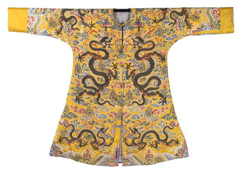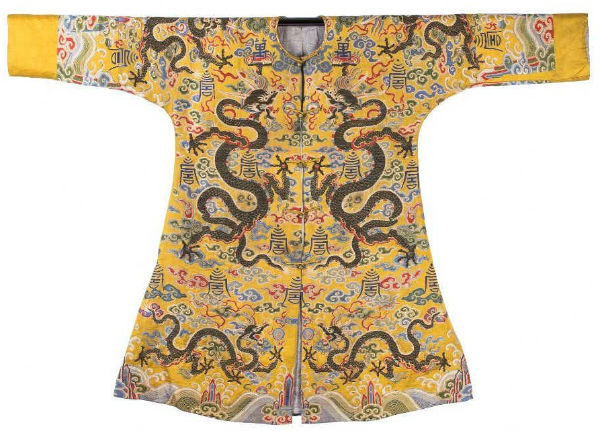
NEW YORK – In the Chinese culture, imperial dragon robes carried gravitas and the best examples were worn by royalty and top consorts as indicators of their identity and status. A robe was akin to a uniform and before the People’s Republic did away with imperial rule and the dragon emblem, dragons were an important motif in robes. Imperial tailors spent thousands of hours painstakingly stitching and embroidering these elegant robes, using gold thread.
The imperial court in the mid-18th century, had strict rules determining what kind of dress was appropriate for each occasion, from rituals and court functions to traveling and just being at home with one’s family. These rules covered the minutest detail in choices of what embroidered motifs were used to what color robes a person could don. Only the highest empresses were allowed to wear bright yellow while other imperial colors included red, blue and light blue. “Color, exquisite woven or embroidered motifs, and tailoring still provide clues about these important ladies and their world,” according to the Freer|Sackler, the Smithsonian’s museums of Asian art in Washington, D.C., which in 2019 mounted an exhibition, “Empresses of China’s Forbidden City, 1644–1912,” which used art, objects and costume to tell the story of how women actively shaped Qing history.
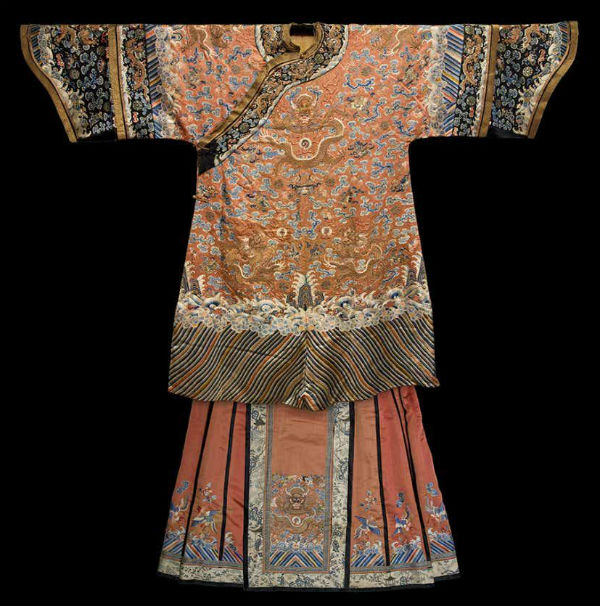
Dragons were an important motif as these mythical animals were highly esteemed in the Chinese culture, and the tradition of embroidering dragons on an emperor’s robe dates back to the long-lasting Zhou dynasty (1046-256 B.C.) but it was not until the Manchu came from the northeast part of China to overtake the empire in the Qing Dynasty (1636-1912) that the place of these garments was officially secured with these robes becoming commonly referred to as dragon robes. The blending of the Qing and Manchu cultures took the best from both worlds and the dragon robes incorporated ideograms and motifs having their roots in each culture’s traditions.
“The dragon, an imagery beast, an emblem of the past, is an icon of absolute power and epitomizes dictatorship,” said Mary Ann Lum, co-owner of Gianguan Auctions in New York City with Kwong Lum. “The Manchu once conquered the Han and overturned the Ming dynasty and were eager to continue as ruler of the Imperial Palace and happily adopted the dragon as symbol of authority. They enforced the code systems of dragon robes with placement and color denoting political ranks.”
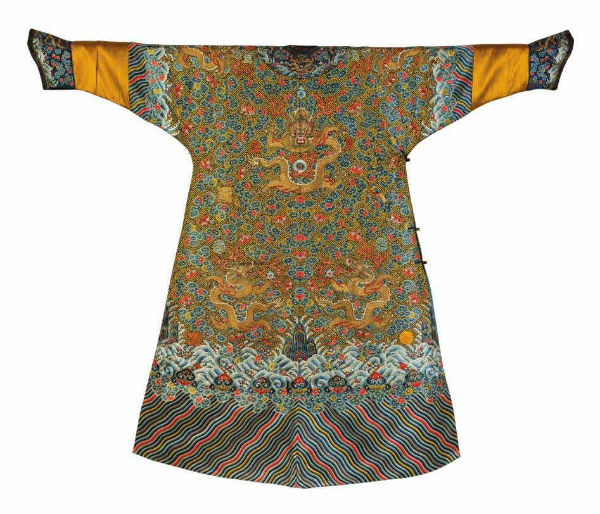
Many of the more common dragon robes featured golden dragons and included auspicious clouds and other elements. Yellow, a significant color for celebrations, was typically only worn on festive occasions with other colors worn during days of sacrifice. There was an imperial court robe style for women called a “chaopao” while the “jifu” (“auspicious robes”) was to be worn during festive celebrations, family banquets, birthdays and other important but less formal occasions, according to the Freer|Sackler.
“Clothing is a wearable art. Informal robes created for the imperial consorts or noblewomen were less rigid in the code system that conveys the social standings, made from the finest quality silk or satin, embroidered or brocaded, all with exquisite workmanship,” Lum said. “Not bound by the restricted color scheme, they can be blue, lavender or green; all up to the personal preference of the wearer, reflecting their influence in art.”
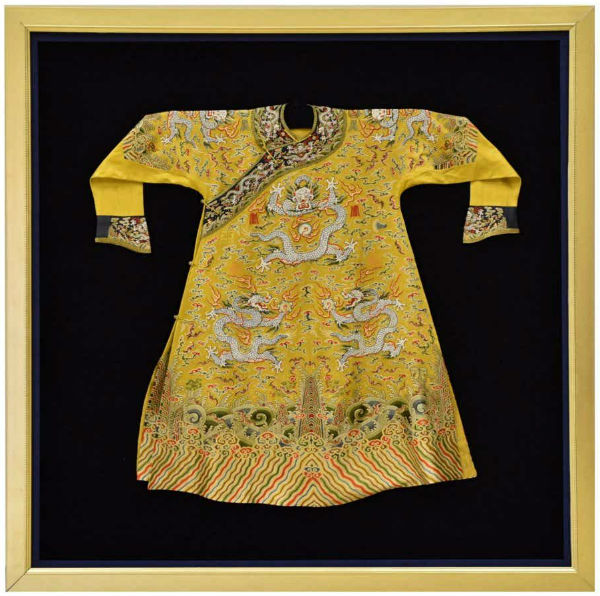
Although still centered on a dragon motif, mythical animals, sprigs of flowers, plants and religious or auspicious objects were placed around the dragon on these robes. Guarding against total cultural assimilation, the Manchus adjusted to the Han style bureaucracy and adopted the Buddhist religion while enforcing their own ethnic and cultural differences. The design on these festive and magnificent dragon robes, reveal their opulent lifestyle, Lum explained.
While antique Chinese vases and sculptural objects often sell at spectacular prices, some in the seven figures, dragon robes have remained a good buy for many years, despite their beauty and fine craftsmanship. Budding collectors who do their homework will find quality examples abound in all price points.
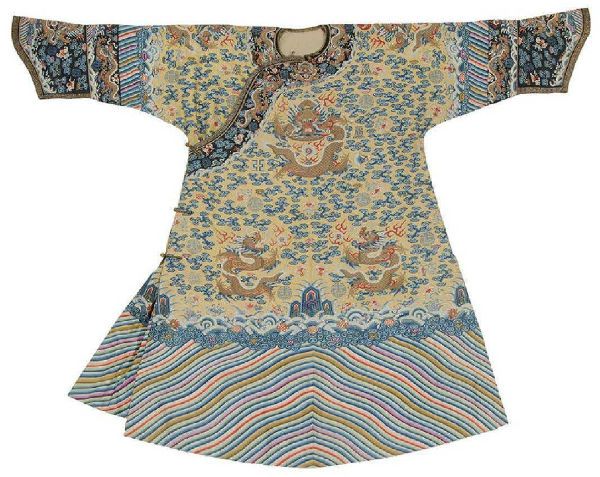
“Dragon robes as a textile category is undervalued in the auction market, even prices of the Imperial ones lag behind ceramics,” Lum said. “Look for the quality of the textile, the intricacy of the weaving and the flow of the pattern, its Chi. Much like a Chinese ink painting, the Chi reflects the artistry of the designer, often the wearer, and the weaver who implemented them.”
With interest in dragon robes climbing, however, thanks to exhibitions like the Freer|Sackler’s “Empresses” exhibit and the Met’s 2015 blockbuster, “China: Through the Looking Glass” in New York City, collectors will likely soon see higher prices and more competition.


